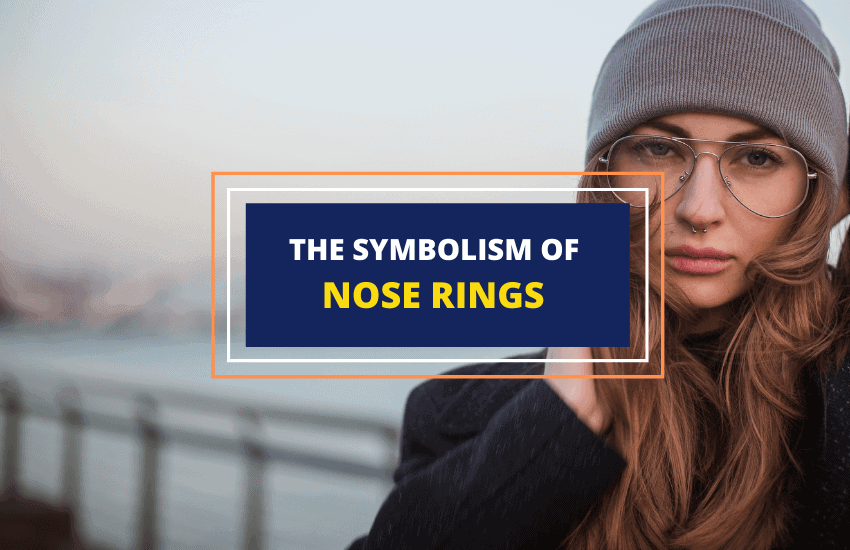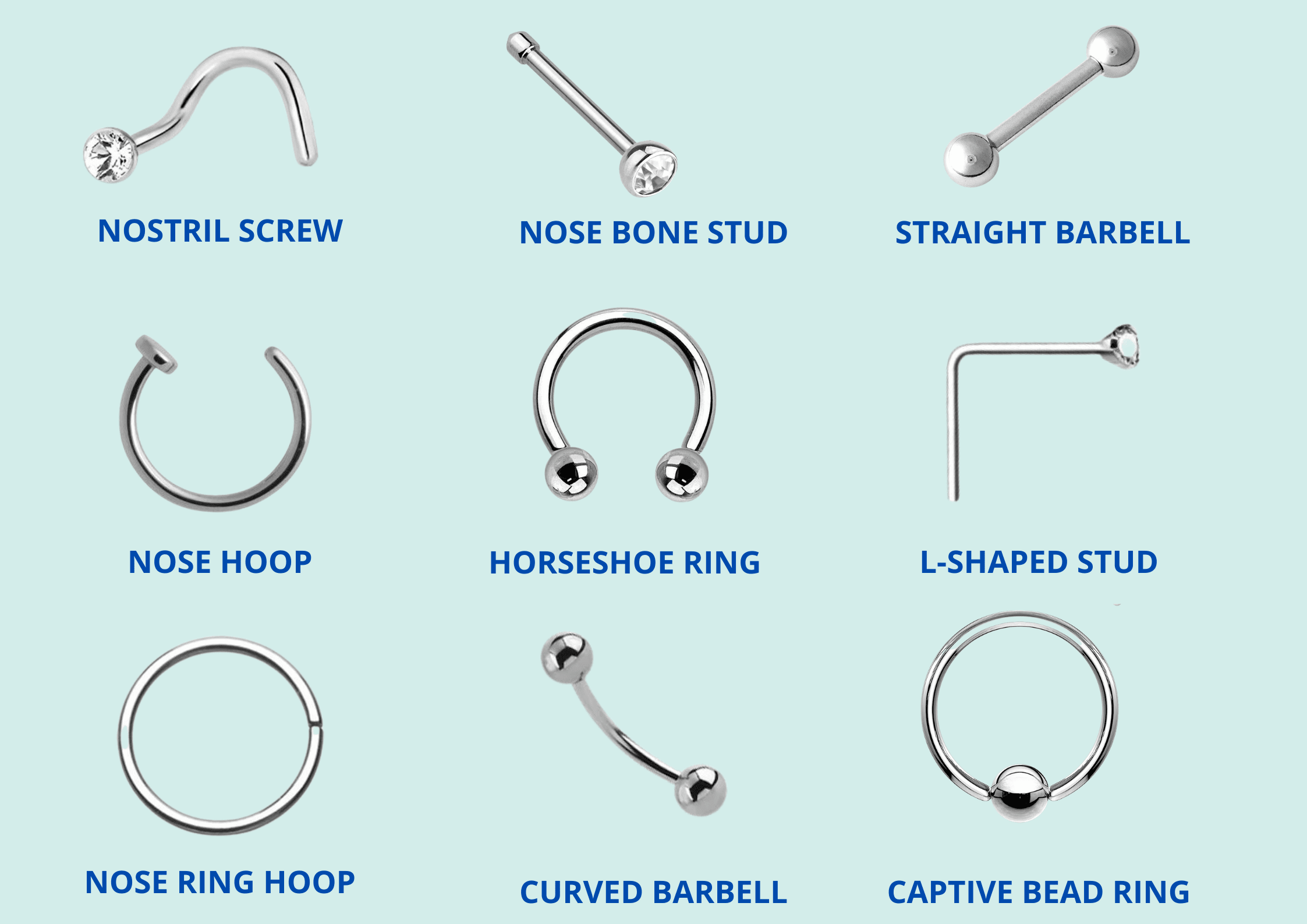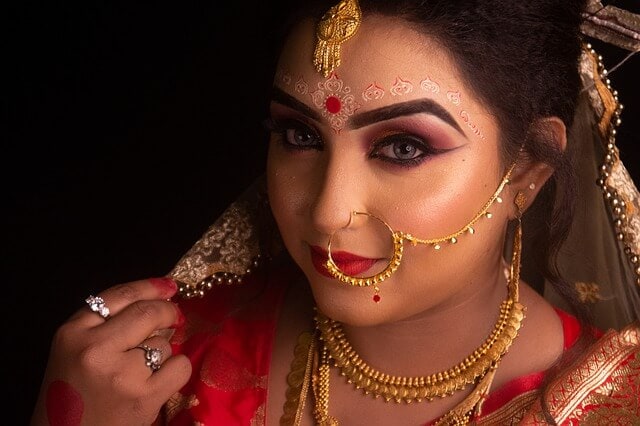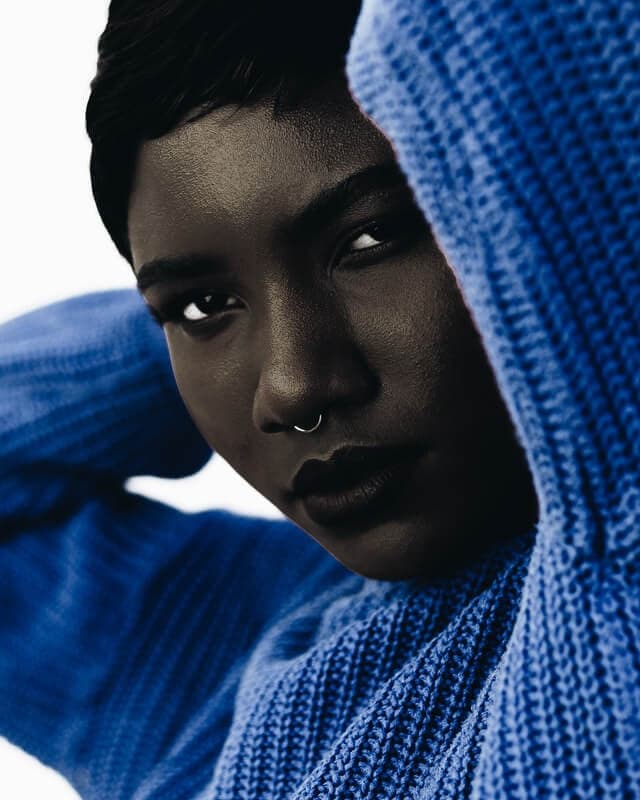
Table of Contents
Among the oldest types of jewelry in the world, nose rings are common accessories worn by women across the globe. While in the West, the trend of wearing nose rings is somewhat new, in other parts of the world, the practice of wearing nose rings dates back hundreds, if not thousands, of years.
Unlike most other types of jewelry, nose rings can be viewed symbolically. They hold varying meanings, depending on culture and region. Even in the West, nose rings have represented many things – from counter culturalism, rebellion, and anti-conservatism to simply just a fashion accessory.
Intrigued? Here’s a closer exploration of the symbolism and meaning of nose rings around the world.
What’s a Nose Ring?
Let’s begin by dispelling a myth. The term nose ring is somewhat misleading, because there are many types of nose jewelry and not just rings. The following image shows nine types of nose jewelry. While these are colloquially called ‘nose rings’, they each have their own name.

There are also many types of nose piercings to choose from. While the nostril piercing is possibly the most popular and the most traditional, the septum piercing is also extremely popular around the world.
Where Did Nose Piercings Originate?
The practice of piercing the nose has existed since ancient times, dating back to around 4000 years. The practice is believed to have originated in the Middle East and then spread to India and other parts of the world. Of all the types of nose piercings available, the nostril and septum are two of the oldest, most traditional and well-known.
Nostril Piercing

Originating in the Middle East, the nostril piercing is even mentioned in the Bible, where Isaac gives his future wife Rebekah a nose ring as a gift. From the Middle East, nostril piercings were then introduced to India by the Moghul emperors around the 16th century. So widespread was the nose ring that by the 1500s, this piece of jewelry had become an integral part of Indian culture.
In India, the custom of wearing elaborate nose rings with chains linking them to earrings or hairpins is common among women. The position of the nostril piercing was important, as it was believed to affect the behavior and health of the woman. In some cases, the piercing is made at the acupuncture points on the nostril to encourage submissiveness. Communities in the Northern and Southern parts of India make the piercing on the right nostril. They believe this position eases labor and menstrual pains.
While the nostril piercing had its origins in ancient Eastern culture, the practice only came to the West in the 20th century, making its way into western societies as late as the 1960s. This was a time where Eastern practices were brought back to the West by individuals who travelled to the East in search of spiritual enlightenment. Later on, punks and rock stars began to sport nose rings, associating the jewelry with counter culture and rebellion.
Septum Piercing

The septum is the soft cartilage that connects your nostrils. Unlike nostril piercings, which were typically chosen for beauty, septum piercings were most commonly used for certain rituals and practices among tribal communities. Sometimes referred to as a bullring piercing, this piercing was common among warriors and war loads.
The septum piercing was prevalent among the Native American, African, Mayan, Aztec, and Papua New Guinean tribes, to name a few. These were made of bone, wood, or gemstones such as jade. There were many reasons for wearing septum piercings – it was believed to enhance appearance, enhance concentration and the sixth sense of focus, and was a symbol of ferocity and strength.
In the West, the septum piercing is rising in popularity, valued for its versatility and unique style. Unlike the nostril piercing, the septum piercing can be hidden (if worn with a horseshoe barbell), making it the ideal piercing for professional scenarios where piercings are frowned upon. Today, it’s a mainstream piercing and one that’s only increasing in popularity.
Common Nose Ring Meanings
Today, nose rings are mainly seen as a fashion statement, a bold yet stylish choice, especially in the West. They hold various meanings, some of which are as follows.
Wealth and Prestige
In some tribes, nose rings portray wealth and social status. Their sizes matter because a large-sized nose ring means that the wearer is rich and affluent, while a small nose ring infers that the wearer belongs to a lower social class. This belief can be found among the Berber community of North Africa who wear nose rings to display their wealth. A Berber groom would give his new bride a nose rings as a sign of his affluence. This practice is still common to date.
Marriage
In some regions of the world, a nose ring is similar to a wedding ring, symbolizing marriage. Hindu brides typically wear nose rings as a symbol of getting married, as well as to honor the Hindu deity Parvati. In other parts of the world, men still gift their brides with nose rings on their wedding day, a practice that stems from the Biblical story of Rebekah being given a nose ring as a symbol of her suitability to marry Isaac. Some communities in the Middle East included nose rings in their dowry alongside cows and goats.
Fertility
In Ayurvedic practices, it is believed that a woman’s reproductive organs are connected to her left nostril. For this reason, some Indian women wore nose rings to ease menstrual discomfort and labor pains. According to Ayurveda practices, wearing a ring on your left nostrils boosts fertility, enhances sexual health, increases sexual pleasure, relieves menstrual cramps, and eases childbirth.
Defiance
Wearing a nose ring in Western culture has a different meaning to that of other communities. Indian communities, for instance, wear nose rings as a sacred tradition. On the contrary, individuals in western communities initially wore them as a sign of rebellion and defiance.
Punk and Gothic communities wear elaborate nose and septum rings as a show of rebellion against societal norms.
Because nose rings were so foreign and uncommon, these communities found these piercings unattractive and viewed them as an act against conservatism. This drew stigma to wearing nose rings, but today this has changed. Nose rings have become almost as common as ear piercings.
What Has Changed?
Nowadays, nose rings have become widely accepted, thanks to the fashion industry that has revolutionized them. The stigma associated with nose rings has pretty much lifted and many people now wear them purely for beauty purposes.
However, some professional settings still look down on nose piercings as unsuitable and unprofessional. Employees may be asked to cover them up or leave them at home.
If you have a nose ring, it’s good to find out a company’s policies and regulations concerning body piercings before accepting a job.
Conclusion
While most of the ancient rituals associated with nose rings are still practiced today, the stigma associated with them in the West has decreased. They’re now largely seen as a versatile, stylish accessory. Some types of nose piercings, such as the third eye and bridge piercings, can still be viewed with judgement, in general, nose rings are seen as a mainstream accessory today.








